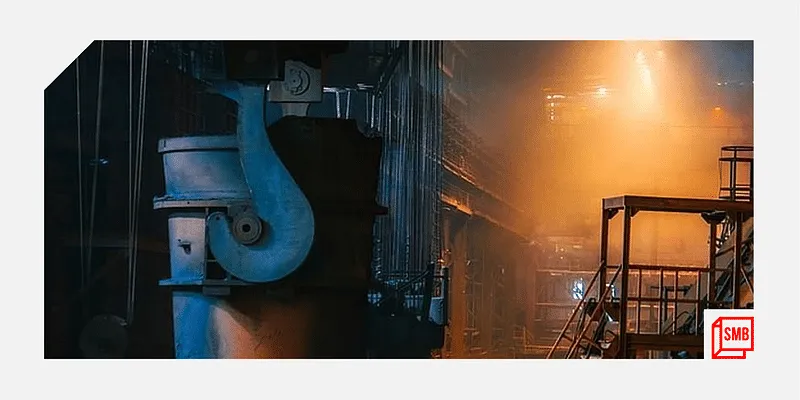From liquidity challenges to COVID impact, how the MSME sector is working to emerge stronger
Although the government has undertaken various meaningful and effective reform measures for the sector in the last two years for mitigating the impact of the pandemic, MSMEs are still in the recovery phase and are looking at continuous handholding by the government.
The micro, small, and medium enterprises (MSME) sector has emerged as a highly vibrant and dynamic sector of the Indian economy over the last few decades. The sector contributes significantly to the economic and social development of the country by fostering entrepreneurship and generating large employment opportunities at comparatively lower capital costs, next only to agriculture.
MSMEs are complementary to large industries as ancillary units and this sector contributes significantly to the inclusive industrial development of the country.
The sector plays a significant role in the growth and development of the Indian economy by contributing around 30 percent of GDP, around 33 percent of all of India’s manufacturing gross value output, and around 49 percent in exports.
There are 634 lakh unincorporated non-agriculture MSMEs in the country engaged in different economic activities, out of which 31 percent are in manufacturing, 36 percent are in trade and 33 percent are in other activities.
As per National Sample Survey (NSS) round 73rd, the MSME sector generates around 11.1 crore (111 million) employment opportunities.
Realising their highest potential
MSMEs have a great potential to generate new business opportunities with futuristic interventions and head in the direction of Industry 4.0.
With a focus on innovation, development of new products, and partnership with reliable suppliers and other key stakeholders, the MSMEs can grow and prosper with strong integration in the global supply chain.
Realising that MSMEs have a very special and vital role in the Indian economy, the government, over the years, has given a major thrust to the growth of MSMEs as the next level of economic growth is expected to come from this crucial sector of the economy.
Though a great deal of focus has been put on the growth of MSMEs, the sector still faces certain issues and challenges such as availability of affordable credit and liquidity, complex compliances, cost of doing business, inadequate infrastructure, lack of awareness regarding government schemes, and stringent labour laws, among others, which hampers the growth potential of MSMEs.
Further, the last two years have been difficult for the Indian economy due to the daunting impact of COVID-19-led economic crisis. The pandemic has resulted in severe disruptions in industrial production and growth by severely undermining the supply chains. Due to the COVID-19 scenario, issues such as delay in the availability of finance and credit, timely payment and adjudication of pending dues, cumbersome procedural requirements, and inflexible regulatory compliance have become more sensitive for MSMEs.
Undertaking reforms
Although the government has undertaken various meaningful and effective reform measures for the MSME sector in the last two years for mitigating the daunting impact of COVID-19, the MSMEs are still in the recovery phase and look forward to continuous handholding by the government.
At this juncture, the focus should be on ensuring the provision of hassle-free disbursement of loans vis-à-vis enhanced liquidity for MSMEs, especially in rural sectors. The government should ensure time-bound disposal of adjudication of dues and consider outsourcing this activity appropriately as per the act to reduce the pendency of cases.
Smooth functioning Public Sector Units (PSUs) without disruption due to payment problems is of paramount importance in these dynamic times. The government should provide adequate funds to the PSUs so that they may be able to release the payments of MSMEs and other vendors urgently to provide them with liquidity and facilitate them to run their businesses.
Banks should be allowed to give up to 50 percent additional loan on the present limit as per the performance of MSME units without additional collateral. It is suggested that banks should also be integrated to offer uniform service to customers.
At present, different banks have different norms to give loans, including collateral security deposits. There must be synchronization between the RBI and all banks.
MSMEs suffer a lot as cheque clearance takes a minimum of three to seven days. With working capital already under strain, this adds fuel to the fire. Therefore, cheque clearance time should be reduced.

Enhancing their efficiency
It is suggested that the value chains of MSMEs should be enhanced further, thus making them more structurally competent to add to their efficiency, and hence the country’s overall export growth momentum.
The cost competitiveness of MSME exporters should be improved and a level playing field should be created. Reduced costs of doing business and a level playing field in the country will not only increase the competitiveness of our exporters but also reduce imports of the items where India has domestic capabilities.
The government should aggressively focus on reducing the cost of doing business including the costs of capital, costs of power, costs of logistics, costs of land and availability of land, and costs of compliances. A cost-effective logistics network would provide impetus to the MSME sector in the country by making MSMEs competitive internationally.
Also, a cost-effective logistics network would provide impetus to the sector by making MSMEs competitive internationally. Integrated development of the logistics sector in the country would inform, clarify, strengthen, and prioritize the key objectives, focus areas, and the governance framework for logistics in India. It is suggested that the logistics cost in the country should be reduced from the current level of 14 percent of GDP.
On the taxation front, we appreciate the reduction in the corporate tax from a peak rate of more than 30 percent to an effective rate of around 25 percent. However, to benefit the entire MSME sector, we suggest a reduction in tax on MSME firms working as proprietorship/ partnerships. Hence, taxes should come down on these types of businesses going forward. For such businesses, it is suggested that the maximum tax slab be brought down to 25 percent.
To give great momentum to exports, export income should be made tax free for MSMEs for three years and the income of large enterprises from incremental exports (Y-o-Y) be made tax free. This will help in partly compensate the additional cost of logistics and other bottlenecks faced by Indian exporters.
The shortage of raw materials, high input prices, among others, are impacting the production possibilities and anticipated sales volumes and posing a challenge to small businesses to operate. At this juncture, there is a need to address the high commodity prices and shortages of raw materials to support the consumption and private investments in the country.
Conclusion
To realise their full potential, MSMEs need to make full use of different funding facilities and marketing opportunities available in the country and avail benefits of various schemes announced by the Government of India under the Aatmanirbhar Bharat Abhiyaan.
At this juncture, support in terms of a marketing platform to MSMEs is needed to help them move forward easily after the daunting impact of the pandemic. Further, the frequency of awareness campaigns for the MSME sector need to be increased so that every industry can take optimum benefit of the government schemes.
Given that great support and facilitation are provided, the MSME sector has full potential to significantly contribute in the journey of Indian economy towards becoming Aatmanirbhar Bharat with $5 trillion economy in the coming times.
Edited by Megha Reddy
(Disclaimer: The views and opinions expressed in this article are those of the author and do not necessarily reflect the views of YourStory.)









